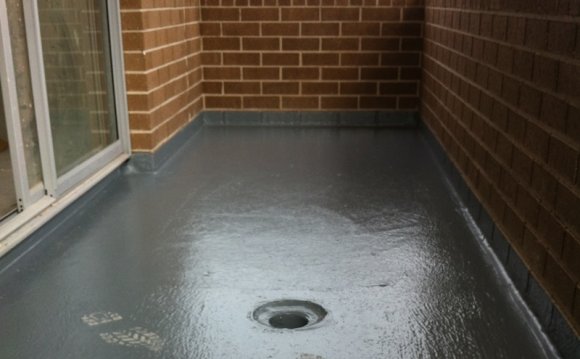
Laminate flooring is a great option for any room. It is often much cheaper than the hardwood floors it mimics. Additionally, it is easy to take up, simple to put down, and durable; it can make your home look elegant and well-appointed without much fuss or muss.
However, there is a major drawback to the otherwise amazing laminate flooring—it usually doesn’t come waterproofed.
Because of the materials that it is made of, laminate has a tendency to swell when it gets wet. While this may not seem like a big of a deal in the short term when it is still an unnoticeable change to the naked eye, it becomes a bigger deal when the wood begins to chip and splinter because it is too large to fit into the area in which it was installed. This can not only make your floor look cheap, but also cause it to be a hazard.
Here are a few laminate floor waterproofing options that can help keep your floor looking fabulous a lot longer. Choose the waterproofing method that best suits your situation.
1. Buy Waterproofed Flooring
This seems like an obviously simple solution, but for homeowners who have regular laminate already installed, it may not be the best idea to pull it all up and start over. However, if you’re renovating or designing a home in a humid climate, non-waterproofed flooring home is going to be a problem. If you have young children that are prone to spills or pets that can have accidents, it’s important to invest in floors that will withstand these types of incidents.
Waterproofed laminate flooring is not too much more expensive than the regular flooring, and it will last much longer. Plus, manufacturers often offer warranties, which means you may not have to foot the bill if something goes wrong.
2. Seal the Locking Mechanisms
You can buy a laminate floor sealant at most home improvement stores, and because these sealants don’t glue the planks together, you can lift the floor easily if you ever need to. Buying a sealant specific to your laminate is important because it will allow your flooring to expand and contract with the weather rather than remaining rigid. This can help keep your wood from splintering or cracking when the humidity is high.
Often laminate companies have a sealant that they manufacture or recommend for people to use. So, start with that brand before branching out.
It is important to keep in mind that adding a sealant can double the time it takes to install the floor, as adding sealant to each laminate plank will add up.
Timing is everything here, as you will more than likely have excess sealant that needs to be cleaned up. Make sure that you clean this up as soon as possible because most of the different kinds of waterproof seals often harden very quickly. Of course, prevention is the key to make sure you don't end up with globs of dried adhesive, so be careful when you are using these kinds of products.
3. Caulk the Expansion Gap
Another option is to just caulk the areas most at risk for water damage. By caulking the expansion gaps by walls and fixtures, you can keep the laminate floor in peak condition by preventing water from getting into the areas that are most vulnerable to water infiltration.
Often when items are spilled, liquid can run into the cracks of the flooring, however small they may be. So, preemptively calking the expansion gaps with silicone caulk will prevent liquid from soaking in through cracks and ruining the floors. Plus, because silicone is flexible, your floors do still have the ability to expand slightly, if needed, without chipping or warping.
4. Top Coat with Polyurathane
Covering your laminate with polyurathane is also a great way to make sure that your flooring is sufficiently waterproofed. Aside from installing waterproof flooring, this is the most effective way to have a waterproof laminate surface. The caulk and sealant will keep the gaps (both between planks and between fixtures) safe, but it won't protect the actual floor boards. Coating your floor with polyurathane can keep the entire floor safe from damage.
However, it is important to note that polyurethane won't adhere well to the top layer of resin on the laminate flooring. You also don't want to sand down laminate floors, as it will ruin them because of the way they are constructed. You will have to apply the polyurethane with a mop and allow it to dry, repeating this process for at least two coats, though it is suggested to apply more depending on your brand of coating.









